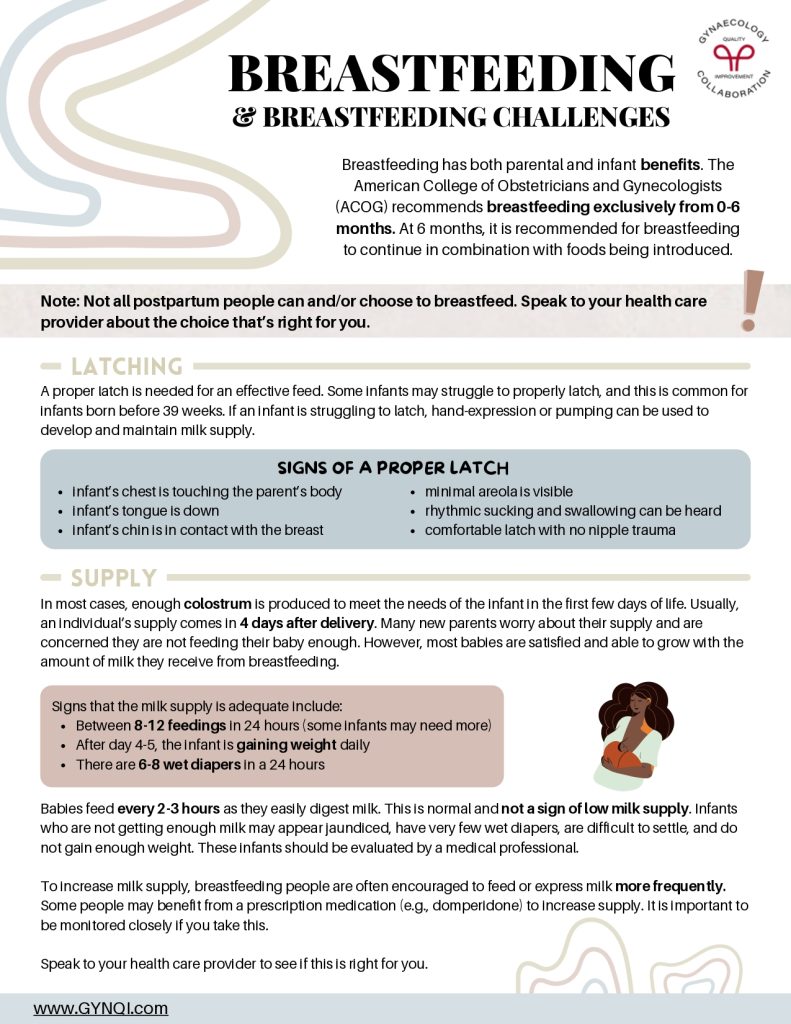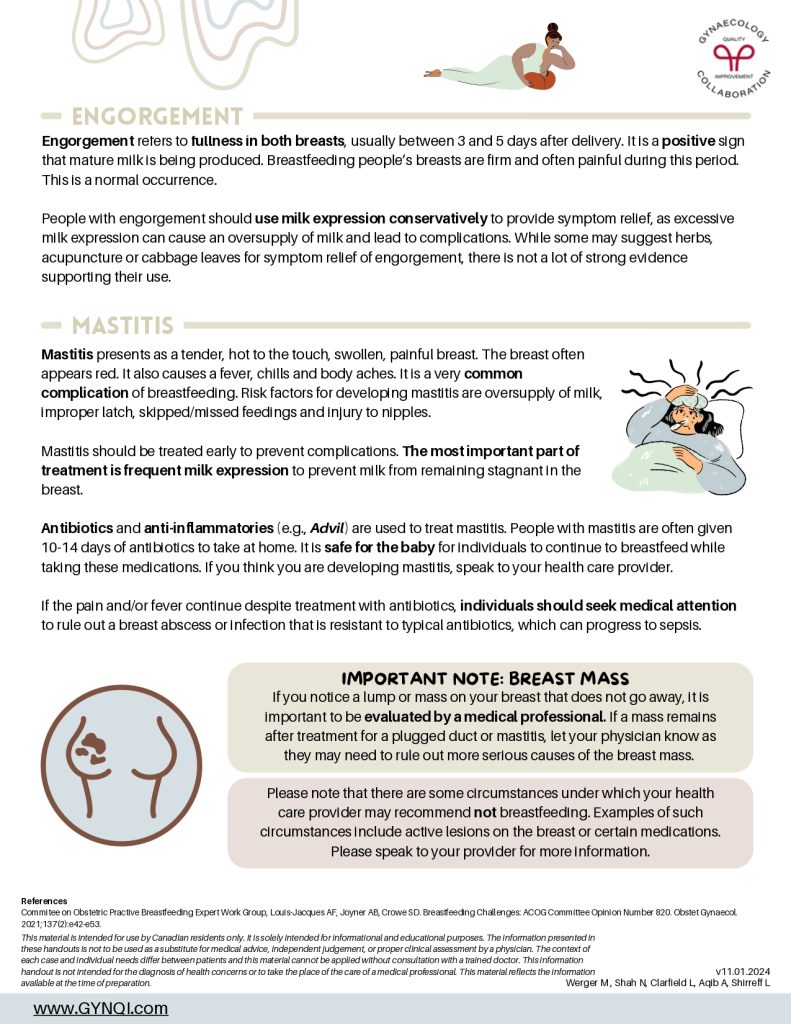
Breastfeeding & Breastfeeding Challenges
Breastfeeding has both parental and infant benefits. The American College of Obstetricians and Gynecologists (ACOG) recommends breastfeeding exclusively from 0-6 months. At 6 months, it is recommended for breastfeeding to continue in combination with foods being introduced.
Note: Not all postpartum people can and/or choose to breastfeed. Speak to your health care provider about the choice that’s right for you.
Latching
A proper latch is needed for an effective feed. Some infants may struggle to properly latch, and this is common for infants born before 39 weeks. If an infant is struggling to latch, hand-expression or pumping can be used to develop and maintain milk supply.
Signs of A Proper Latch
- infant’s chest is touching the parent’s body
- infant’s tongue is down
- infant’s chin is in contact with the breast
- minimal areola is visible
- rhythmic sucking and swallowing can be heard
- comfortable latch with no nipple trauma
Supply
In most cases, enough colostrum is produced to meet the needs of the infant in the first few days of life. Usually, an individual’s supply comes in 4 days after delivery. Many new parents worry about their supply and are concerned they are not feeding their baby enough. However, most babies are satisfied and able to grow with the amount of milk they receive from breastfeeding.
Signs that the milk supply is adequate include:
- Between 8-12 feedings in 24 hours (some infants may need more)
- After day 4-5, the infant is gaining weight daily
- There are 6-8 wet diapers in a 24 hours
Babies feed every 2-3 hours as they easily digest milk. This is normal and not a sign of low milk supply. Infants who are not getting enough milk may appear jaundiced, have very few wet diapers, are difficult to settle, and do not gain enough weight. These infants should be evaluated by a medical professional.
To increase milk supply, breastfeeding people are often encouraged to feed or express milk more frequently. Some people may benefit from a prescription medication (e.g., domperidone) to increase supply. It is important to be monitored closely if you take this.
Speak to your health care provider to see if this is right for you.
Engorgement
Engorgement refers to fullness in both breasts, usually between 3 and 5 days after delivery. It is a positive sign that mature milk is being produced. Breastfeeding people’s breasts are firm and often painful during this period. This is a normal occurrence.
People with engorgement should use milk expression conservatively to provide symptom relief, as excessive milk expression can cause an oversupply of milk and lead to complications. While some may suggest herbs, acupuncture or cabbage leaves for symptom relief of engorgement, there is not a lot of strong evidence supporting their use.
Mastitis
Mastitis presents as a tender, hot to the touch, swollen, painful breast. The breast often appears red. It also causes a fever, chills and body aches. It is a very common complication of breastfeeding. Risk factors for developing mastitis are oversupply of milk, improper latch, skipped/missed feedings and injury to nipples.
Mastitis should be treated early to prevent complications. The most important part of treatment is frequent milk expression to prevent milk from remaining stagnant in the breast.
Antibiotics and anti-inflammatories (e.g., Advil) are used to treat mastitis. People with mastitis are often given 10-14 days of antibiotics to take at home. It is safe for the baby for individuals to continue to breastfeed while taking these medications. If you think you are developing mastitis, speak to your health care provider.
If the pain and/or fever continue despite treatment with antibiotics, individuals should seek medical attention to rule out a breast abscess or infection that is resistant to typical antibiotics, which can progress to sepsis.
Important Note: Breast Mass
If you notice a lump or mass on your breast that does not go away, it is important to be evaluated by a medical professional. If a mass remains after treatment for a plugged duct or mastitis, let your physician know as they may need to rule out more serious causes of the breast mass.
Please note that there are some circumstances under which your health care provider may recommend not breastfeeding. Examples of such circumstances include active lesions on the breast or certain medications. Please speak to your provider for more information.




